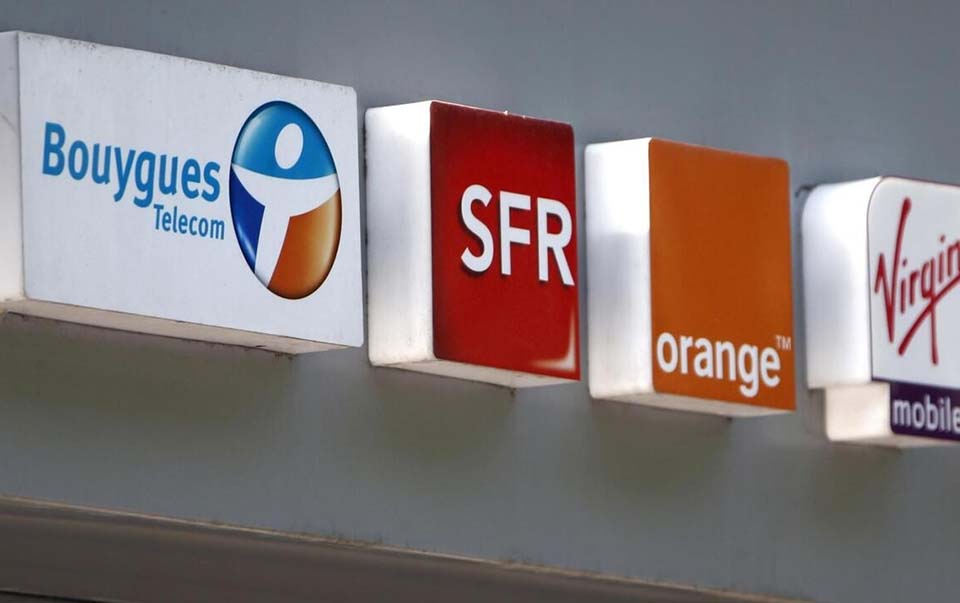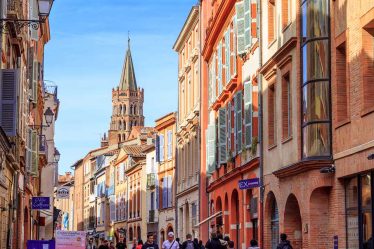
I’ve just returned from an enchanting adventure in Paris, the City of Light, and I’m eager to share my experiences and tips with you. Paris is a city that effortlessly combines timeless elegance with modern charm, offering a wealth of art, culture, cuisine, and history.
Whether you’re a first-time visitor or a seasoned traveler, Paris has something to captivate everyone. Let’s dive into this detailed guide to help you plan an unforgettable trip to Paris.
Packing and Preparing for Paris
Clothing Tips
Parisian fashion is renowned worldwide, so dressing appropriately can enhance your experience. Here are some tips to help you pack:
1. Stylish Yet Comfortable: Parisians are known for their chic style. Aim for smart casual attire that is both stylish and comfortable. Think fitted jeans, elegant blouses, and tailored coats.
2. Layered Clothing: Paris weather can be unpredictable, especially in spring and autumn. Layers such as light sweaters, scarves, and jackets are ideal.
3. Comfortable Shoes: You’ll be doing a lot of walking, so pack comfortable yet stylish shoes. Ballet flats, loafers, or low-heeled boots are perfect.
4. Evening Wear: If you plan to dine at a fancy restaurant or attend a show, bring a dressier outfit. A little black dress or a smart blazer can go a long way.
Travel Gear
Ensure a smooth and enjoyable trip by packing the right gear:
1. Power Adapter: France uses type C and E plugs. Bring a universal adapter to charge your devices.
2. Portable Charger: A portable charger is essential to keep your phone and other devices powered throughout the day.
3. Reusable Water Bottle: Stay hydrated while exploring the city. Paris has many public fountains where you can refill your bottle.
4. Daypack: A small, secure daypack is perfect for carrying your daily essentials like maps, snacks, and a camera.
Navigating Local Culture and Etiquette
Understanding and respecting local customs can greatly enhance your experience in Paris:
1. Politeness: Politeness is highly valued in France. Always greet people with a “Bonjour” (good day) or “Bonsoir” (good evening) and say “Merci” (thank you).
2. Dining Etiquette: Dining is an important part of French culture. Keep your hands visible on the table (but not your elbows), and use cutlery for most foods.

3. Quiet Voices: Parisians tend to speak quietly in public places. Avoid speaking loudly, especially on public transport.
4. Tipping: Tipping is appreciated but not obligatory. A service charge is usually included in your bill, but you can leave an extra 5-10% for exceptional service.
Currency Exchange and ATM Tips
The currency in Paris (and the rest of France) is the Euro (€). Here’s how to manage your money effectively:
1. Currency Exchange: Exchange a small amount of money before you arrive for immediate expenses. Use reputable exchange services or withdraw from ATMs for better rates.
2. ATM Withdrawals: ATMs are widely available throughout the city. Use ATMs located inside banks or busy areas for safety. Notify your bank of your travel plans to avoid any issues with your card.
Budgeting for Your Trip
Here’s a rough breakdown of what you can expect to spend in Paris:
1. Accommodation: Budget hotels and hostels range from €50-€100 per night. Mid-range hotels cost around €100-€200.
2. Food: Street food and casual dining can cost around €10-€20 per meal. Dining at nicer restaurants will range from €30-€60.
3. Transport: A single metro ticket costs around €1.90. Consider purchasing a carnet (book of 10 tickets) for €16.90 for better value. Day passes are also available.
4. Attractions: Many museums and landmarks have entrance fees ranging from €10-€20. Some offer free entry on the first Sunday of the month.
Must-Visit Attractions in Paris
1. The Eiffel Tower
No trip to Paris is complete without a visit to the iconic Eiffel Tower. Whether you choose to admire it from the ground, take the elevator, or climb the stairs to the top, the views are spectacular. For a truly magical experience, visit at night to see the tower sparkle.
2. The Louvre Museum
The Louvre is the world’s largest art museum and a historic monument in Paris. Home to thousands of works of art, including the Mona Lisa and the Venus de Milo, the Louvre is a must-see for art lovers. Plan to spend several hours exploring its vast collections.
3. Notre-Dame Cathedral
Despite the devastating fire in 2019, Notre-Dame remains a symbol of Paris and French Gothic architecture. You can still visit the site and admire the exterior while restoration efforts continue. Nearby, the Sainte-Chapelle offers stunning stained glass windows and is worth a visit.

4. Montmartre and the Sacré-Cœur Basilica
Montmartre is a charming district known for its bohemian history and artistic heritage. Wander the cobblestone streets, visit the artists at Place du Tertre, and climb the steps to the Sacré-Cœur Basilica for a panoramic view of Paris.
Street Food and Safety Tips
Paris offers a delightful array of street food options. Here are some must-try items:
1. Crêpes: Sweet or savory, crêpes are a Parisian staple. Look for stands near tourist areas or in local markets.
2. Falafel: Head to the Marais district for some of the best falafel sandwiches at places like L’As du Fallafel.
3. Baguette Sandwiches: Simple yet delicious, these sandwiches are made with fresh baguettes, ham, cheese, and butter.
4. Macarons: These delicate, colorful cookies are a must-try. Pierre Hermé and Ladurée are famous for their macarons.
Food Safety Tips
1. Choose Busy Stalls: High turnover means fresh food. Busy stalls are a good indicator of quality and safety.
2. Check Hygiene: Look for stalls that display hygiene ratings or have clean and organized setups.
3. Stay Hydrated: Drink plenty of water, especially if you’re indulging in rich or salty foods.
4. Hand Sanitizer: Carry hand sanitizer to use before eating if you can’t wash your hands.
Transportation in Paris
Paris has an efficient and extensive public transportation system. Here’s how to navigate the city:
1. Metro: The Paris Metro is fast, affordable, and easy to use. Download a metro map or use a navigation app to plan your routes.
2. Buses: Paris buses are a great way to see the city. They are less frequent than the metro but offer scenic routes.
3. Bicycles: Vélib’ is the city’s bike-sharing system. It’s a fun and eco-friendly way to explore Paris.
4. Walking: Many of Paris’s attractions are within walking distance of each other. Walking is a great way to discover hidden gems and enjoy the city’s ambiance.
5. Taxis and Ride-Sharing: Taxis are available throughout the city, and apps like Uber are widely used.
SIM Card and Connectivity
Staying connected is essential for navigating and sharing your experiences. Here’s how to get a local SIM card:
1. Purchase at the Airport: SIM cards are available at Charles de Gaulle and Orly airports. Look for providers like Orange, SFR, and Bouygues Telecom.

2. Local Shops: Mobile phone shops and convenience stores throughout the city sell SIM cards. Bring your passport for registration.
3. Prepaid Plans: Opt for a prepaid plan with data, which is convenient and affordable. Plans typically start from €10-€30 for a decent amount of data.
Planning Your Itinerary and Budget Adjustment
To make the most of your visit, plan your itinerary based on your interests. Here’s a sample itinerary:
Day 1: Iconic Paris
– Morning: Visit the Eiffel Tower
– Afternoon: Explore the Louvre Museum
– Evening: Stroll along the Seine and dine at a riverside restaurant
Day 2: Historic Paris
– Morning: Tour Notre-Dame Cathedral and Sainte-Chapelle
– Afternoon: Wander through the Marais district and visit Place des Vosges
– Evening: Enjoy dinner in the Latin Quarter
Day 3: Artistic Paris
– Morning: Explore Montmartre and visit Sacré-Cœur Basilica
– Afternoon: Discover the art at Musée d’Orsay
– Evening: Watch a cabaret show at Moulin Rouge
Day 4: Modern Paris
– Morning: Shop at Galeries Lafayette or Le Bon Marché
– Afternoon: Visit the Pompidou Centre for modern art
– Evening: Enjoy a meal at a trendy bistro in Le Marais
Adjusting Your Budget
If you find your expenses are higher than anticipated, here are some tips to stay within budget:
1. Accommodation: Consider staying in budget hotels, hostels, or Airbnb. Booking in advance can help secure better rates.
2. Food: Eat at street food markets or casual dining spots rather than expensive restaurants. Many bakeries (boulangeries) offer affordable and delicious options.
3. Transport: Use public transport instead of taxis. Walking is also a great way to save money and explore the city.
4. Attractions: Take advantage of free entry days at museums or consider purchasing a Paris Museum Pass for discounted access to multiple attractions.
Travel Insurance: A Must-Have
Travel insurance is essential for peace of mind. Here’s why you should get it:
1. Medical Emergencies: Covers unexpected medical expenses.
2. Trip Cancellations: Protects your investment if you need to cancel your trip.
3. Lost Baggage: Covers the cost of lost or stolen belongings.
4. Personal Liability: Provides coverage if you accidentally cause damage or injury.
Choose a comprehensive plan that covers all these aspects. It’s a small investment for significant protection.
Paris is a city that enchants and inspires at every turn. Its blend of history, art, and modern vibrancy creates an unforgettable experience for every visitor. Whether you’re strolling along the Seine, exploring world-class museums, or savoring delectable cuisine, Paris offers a unique and magical adventure.


